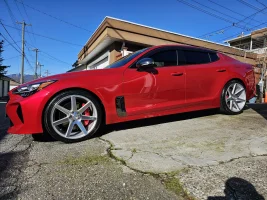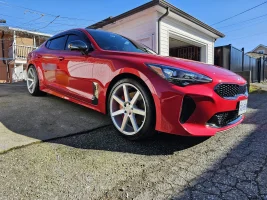Well,
@Ruturaj was responding to my post and telling me to learn how sway bars work, so if anyone should "get his back up" it should be me. But I don't feel insulted, since not being a car guy means that practically everything I get into discussion on I have a lot to learn anyways.
I'm picking up on how sway bars work as I go. My responses are mostly taking what others say or assert and trying to fit it together. I can have ongoing opinions, one of which I will share now:
I don't think that anything about the Stinger is unintentional from production going forward. The OE sway bars were chosen in tandem with the rest of the suspension because the whole package makes the car feel and handle and ride they way its designers intended, or as close as humanly possible within budget.
One of the things that Kia pushed in the promotional materials was the free hand the conceptual designers and the later hardware engineers had in pursuing this concept car (a retro cues approach to a modern Gran Turismo, "redefined"): when they say this:
"What's possible when there's nothing holding you back? When you're free to create the car of your dreams, without history weighing you down? What can you achieve with a blank slate, a deep bench of legendary talent, an irrepressible spirit, and seven years to design, engineer, and fine-tiune that dream into reality? We know. Now it's your turn to find out."
That's a lot of hype, sure it is. But it also says a lot about the concept through design that this original platform came to us as a production car.
You can't really support your assertion with anything. Seven years from concept to production, and Kia unintentionally muffed the sway bar bushings?








